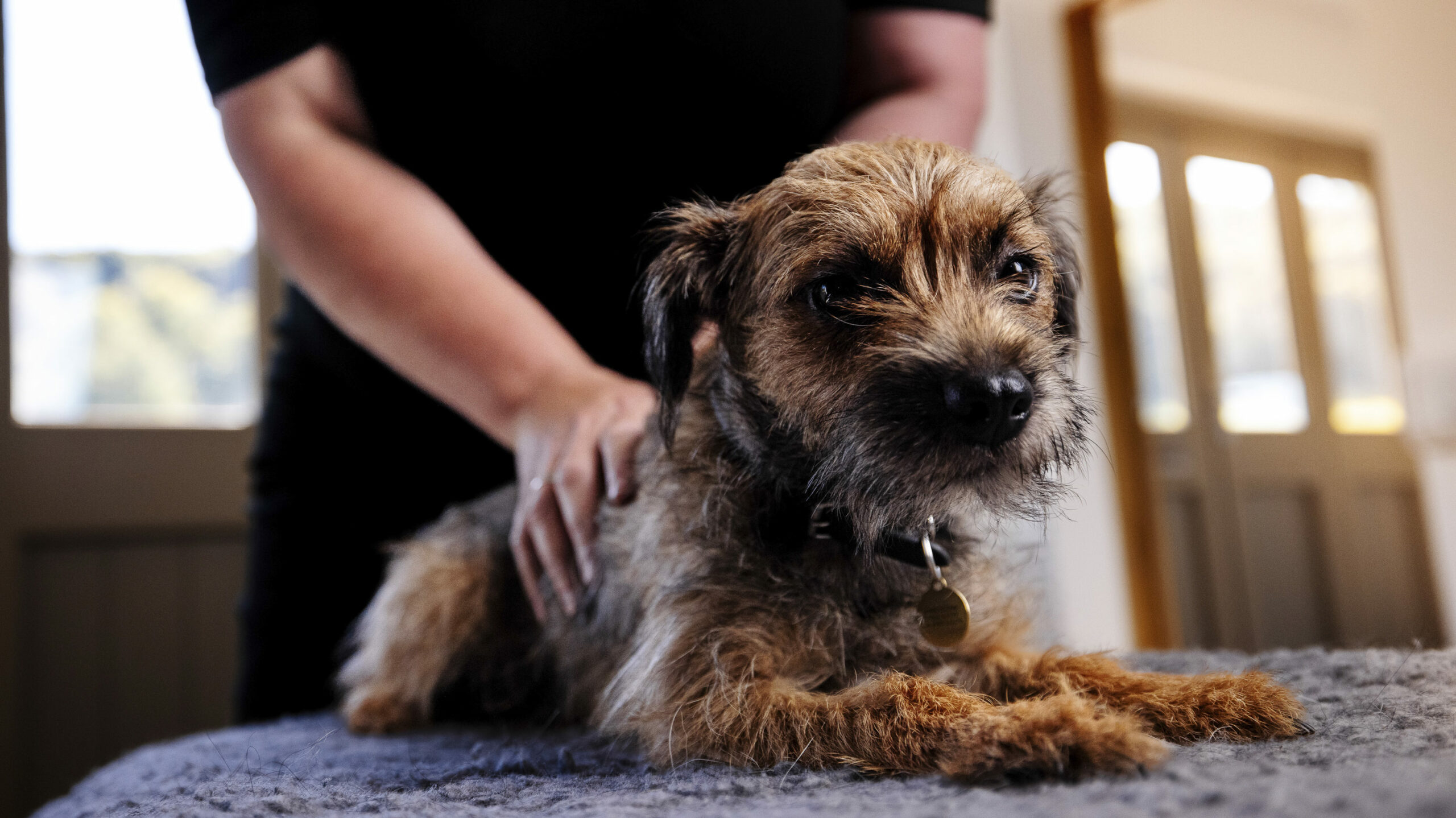Meniscal
tears
Meniscal tears are a common clinical finding in dogs. Injuries usually involve the medial meniscus and typically occur following cranial cruciate rupture.

What is the meniscus?
In dogs, the stifle (knee) joint sits between the femur (thigh bone) and tibia (shin bone), surrounded by two c-shaped structures called the menisci (or meniscal cartilage). They are made of a rubbery cartilage that, as well as improving the fit of the joint, acts as a shock absorber. There is a medial meniscus on the inner side of the joint and a lateral meniscus on the outer side.
Meniscal tears
In humans, a meniscal tear is a common sports injury, usually triggered by twisting the knee. The meniscus can also degenerate over time.
In dogs, while isolated meniscal tears do occur, the most common presentation is in dogs with cranial cruciate ligament rupture. Meniscal tears are identified in approximately 20-77% of dogs with cruciate ruptures.
When the stifle becomes unstable, as the tibia moves forwards and backwards, it is easy for the meniscus to get trapped and torn. Medial meniscus tears are more common than lateral meniscus tears, as the medial meniscus is more firmly attached to the tibia.
Meniscal tears can either cause or contribute to lameness in dogs. Sometimes a popping or clicking noise/sensation can be observed when the stifle is manipulated.
While you can detect meniscal tears using advanced imaging (MRI and CT) , the most common way to diagnose meniscal tears in dogs is via an arthrotomy (small opening in the joint capsule) or arthroscopically (using a keyhole camera).
If the meniscus is normal, no further treatment is required.
If a meniscal tear is diagnosed, generally they are treated by removing the torn portion (partial meniscectomy). Dogs with long term meniscal tears end up with a bit more osteoarthritis than those that don’t but are generally able to have a good quality of life.
Late meniscal tears
In a small number of dogs that have a normal meniscus, we recognise a problem called a late meniscal tear. This is a tear that occurs after cruciate surgery. We see this in between 2-22% of cases, depending on the procedure.
Affected dogs tend to be displaying good mobility, then go suddenly lame again. If a late meniscal tear is suspected it can be diagnosed by advanced imaging (CT or MRI) but it can be difficult to see, particularly if implants were placed at the time of surgery. In most cases, the easiest way to diagnose a late meniscal tear is via an arthrotomy (small opening in the joint capsule) or arthroscopically (using a keyhole camera) and remove the torn portion. Most dogs recover well from this procedure.
If you have any questions about meniscal tears please speak to your vet.
References
- McCready, D.J. and Ness, M.G. (2016) Diagnosis and management of meniscal injury in dogs with cranial cruciate ligament rupture: a systematic literature review. Journal of Small Animal Practice, 57 (2), pp. 59-66. https://doi.org/10.1111/jsap.12433. Erratum in: Journal of Small Animal Practice, 2016, 57 (4), pp. 221.
- McCready, D.J. and Ness, M.G. (2016) Systematic review of the prevalence, risk factors, diagnosis and management of meniscal injury in dogs: Part 2. Journal of Small Animal Practice, 57 (4), pp. 194-204. https://doi.org/10.1111/jsap.12462
